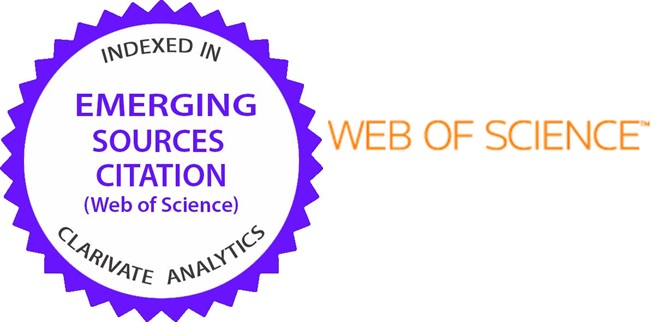Do Environmental Innovations, Trade and Economic Growth Affect the Ecological Footprint in Industrialized Countries? Panel Augmented Mean Group and Common Correlated Effect Estimations
DOI:
https://doi.org/10.31436/ijema.v33i1.1450Keywords:
Technological innovation, EF, Panel dataAbstract
This study assessed the environmental technological innovation (ETI) of the 13 countries with the highest industrial added value (China, the United States, Japan, Germany, India, the United Kingdom, South Korea, France, Russia, Italy, Mexico, Brazil, Indonesia) over the period between 1992 and 2019. The objective is to evaluate the impact of carbon dioxide (CO?) emissions, trade openness (TO), and economic growth (EG) on the ecological footprint (EFP). In this study, a panel data analysis was conducted utilizing the second-generation PANIC unit root test, the Westerlund cointegration test, the Dumitrescu-Hurlin causality test, and the common correlated effect mean group (CCEMG) and augmented mean group (AMG) estimator methods. The results of the analysis demonstrate that, according to the CCEMG, ETI exerts a mitigating influence on EFP in Indonesia. In numerous countries, CO2 has been observed to increase EFP, whereas in a select few countries, EG has been found to have a similar effect. Conversely, in China and South Korea, TO has been identified as a factor contributing to an increase in EFP, while in the United States, it has been identified as a factor that contributes to a decrease in EFP. The AMG indicates that ETI results in a decrease in EFP in Brazil and Indonesia, while simultaneously producing an increase in Mexico. While CO2 is observed to increase EFP in numerous countries, EG is seen to increase EFP in many countries, although this is only the case in India. TO is found to decrease EFP in China, India, South Korea, and Brazil, while simultaneously increasing it in Germany. The empirical evidence suggests that policies aimed at limiting uncontrolled economic growth, prioritising environmentally friendly technological innovations, improving international trade processes and policies with the objective of reducing emissions, and developing environmentally friendly processes and products in production are likely to be effective.
References
Ahmad, N., L. Youjin, S. Zikovi, and Z. Belyaeva. “The Effects of Technological Innovation on Sustainable Development and Environmental Degradation: Evidence From China.” Technol. Soc. 72 (2023): 102184.
Ahmad, M., P. Jiang, A. Majeed, M. Umar, Z. Khan, and S. Muhammad. “The Dynamic Impact of Natural Resources, Technological Innovations and Economic Growth on Ecological Footprint: An Advanced Panel Data Estimation.” Resour. Policy 69 (2020): 101817.
Ali W, A. Abdullah, and M. Azam. “The Dynamic Linkage Between Technological Innovation and Carbon Dioxide Emissions in Malaysia: An Autoregressive Distributed Lagged Bound Approach.” Int J Energy Econ Policy 6, no. 3 (2016): 389–400.
Al-Mulali, U., C. Weng-Wai, L. Sheau-Ting, and A.H. Mohammed. “Investigating The Environmental Kuznets Curve (EKC) Hypothesis by Utilizing the Ecological Footprint as an Indicator Of Environmental Degradation.” Ecological Indicators 48 (2015): 315-23.
Alola, A., F. Bekum, S. Sarkodie. “Dynamic Impact of Trade Policy, Economic Growth, Fertility Rate, Renewable and Non-Renewable Energy Consumption on Ecological Footprint in Europe.” Sci. Total Environ 685 (2019): 702-09.
Antweiler, W., B.R. Copeland, and M.S. Taylor. “Is Free Trade Good For The Environment?” American Economic Review 91, no. 4 (2001): 877–908.
Appiah K, T.A. Worae, B. Yeboah, and M. Yeboah. “The Causal Nexus Between Trade Openness And Environmental Pollution in Selected Emerging Economies.” Ecological Indicators 138 (2022): 108872
Aydin, M., and Y.E. Turan. “The Influence of Financial Openness, Trade Openness, and Energy Intensity on Ecological Footprint: Revisiting the Environmental Kuznets Curve Hypothesis For BRICS Countries.” Environ Sci Pollut Res 27, no. 34 (2020): 43233–3245.
Ayd?n, C., Ö. Esen, Ö., and Y. Çetinta?. “Environmental Innovation, Ecological Footprint, and Environmental Rebound Effects: A Solution for or a Cause of Environmental Degradation?” Research Square (2023): 1-22.
Baabou, W., N. Grunewald, C.O. Plamondon, M. Gressot, and A. Galli. “The Ecological Footprint of Mediterranean Cities: Awareness Creation and Policy Implications.” Environmental Science & Policy 69 (2017): 94-104.
Bai, J., and S. Ng. “A PANIC Attack on Unit Roots and Cointegration.” Econometrica 72, no. 4 (2004): 1127-177.
______, and S. Ng. “Panel Unit Root Tests With Cross-Section Dependence: A Further ?nvestigation.” Econometric Theory 26, no. 4 (2010): 1088-114.
Brooks, Chris. Introductory Econometrics for Finance. Cambridge: Cambridge University Press, 2014.
Carraro, Carlo. “Environmental Technological Innovation and Diffusion: Model Analysis.” In Innovation-Oriented Environmental Regulation, edited by Jens Hemmelskamp, Fabio Leone and Klaus Rennings, 269-97, 2020.
Chien, F., C.C. Hsu, A. Sibghatullah, V.M. Hieu, T.T.T. Phan, and N.H. Tien,. “The Role of Technological Innovation and Cleaner Energy Towards the Environment in ASEAN Countries: Proposing a Policy for Sustainable Development Goals.” Economic Research-Ekonomska Istraživanja 35, no. 1 (2022): 4677-692.
______, M. Sadiq, M.A. Nawaz, M.S. Hussain, T.D. Tran, and T.L. Thanh. “A Step Toward Reducing Air Pollution in Top Asian Economies: The Role of Green Energy, Eco-innovation, and Environmental Taxes.” Journal of Environmental Management, 297 (2021): 113420.
Chu, L.K. “Determinants of Ecological Footprint in OCED Countries: Do Environmental Related Technologies Reduce Environmental Degradation?” Environmental Science and Pollution Research 29 (2022a): 23779–3793.
______. “The ?mpact of Informal Economy on Technological Innovation–Ecological Footprint Nexus in OECD Countries: New Evidence from Panel Quantile Regression.” J. Environ. Stud. Sci. (2022b): 1–19.
Danish, R. Ulucak, and S.U. Khan. “Determinants of The Ecological Footprint: Role of Renewable Energy, Natural Resources, and Urbanization.” Sustainable Cities and Society 54 (2020): 1-10.
Dauda, L., X. Long, C.N. Mensah, and M. Salman. “The Effects of Economic Growth and Innovation on CO2 Emissions in Different Regions.” Environmental Science and Pollution Research, 26, no. 15 (2019): 15028–5038.
Destek, M. A., and A. Sinha. “Renewable, Non-Renewable Energy Consumption, Economic Growth, Trade Openness and Ecological Footprint: Evidence from Organisation for Economic Cooperation and Development Countries.” Journal of Cleaner Production, 242 (2020): 118537.
______, and M. Manga. “Technological Innovation, Financialization, and Ecological Footprint: Evidence from BEM Economies.” Environmental Science and Pollution Research, 28 (2020): 21991–2001.
______, and S.A. Sarkodie. “Investigation of Environmental Kuznets Curve for Ecological Footprint: The Role of Energy and Financial Development.” Science of The Total Environment 650 (2019): 2483-489.
______, R. Ulucak, and E. Do?an. “Analyzing the Environmental Kuznets Curve for The EU Countries: The Role of Ecological Footprint.” Environmental Science and Pollution Research, 25, no. 29 (2018): 29387–9396.
______, and M. Manga. “Technological Innovation, Financialization, and Ecological Footprint: Evidence From BEM Economies.” Environmental Science and Pollution Research 28 (2021): 21991–2001.
Dumitrescu, E.I., and C. Hurlin. “Testing for Granger Noncausality in Heterogeneous Panels.” Economic Modelling 29, no.4 (2012): 1450-460.
Eberhardt, M., and S. Bond. “Cross-Section Dependence in Nonstationary Panel Models: A Novel Estimator.” MPRA Paper (2009): 17692.
______, and F. Teal. “Productivity Analysis in Global Manufacturing Production.” Discussion Paper in University of Oxford Department of Economics no. 515 (2010).
Ersin, O.O., A. Ustabas, and O. Usman. “The Role of Environmental Innovation on Ecological Footprint in Nations with High Technology Exports Concentrations in ?nternational Trade.” Technological Forecasting & Social Change 208 (2024): 123703.
Fernández, Y., M.A. Fernández Lopez, and B. Olmedillas Blanco. “Innovation for Sustainability: The Impact of R&D Spending on CO2 Emissions.” Journal of Cleaner Production 172 (2018): 3459–467.
Görmü?, S., and M. Ayd?n. “Revisiting the Environmental Kuznets Curve Hypothesis Using Innovation: New Evidence from the Top 10 Innovative Economies.” Environmental Science and Pollution Research 27 (2020): 27904–7913.
Grossman, G.M., and A.B. Krueger. “Environmental Impacts of a North American Free Trade Agreement.” Working Paper in National Bureau of Economics no. 3914 (1991).
Islam, M.S. “Influence of Economic Growth on Environmental Pollution in South Asia: A Panel Cointegration Analysis.” Asia-Pacifc Journal of Regional Science 5 (2021): 951–73.
______, A. Rehman, I. Khan, and S.H. Rahaman. “Remittance Outflow and Environmental Quality Nexus in Saudi Arabia: The Role of ICT, Environmental ?nnovation, and Energy Consumption.” Environment, Development and Sustainability, 26 (2024a): 12843–2862.
______. “Does Financial Development Cause Environmental Pollution? Empirical Evidence from South Asia.” Environmental Science, and Pollution Research 29, no.3 (2022): 4350–362.
______. “Linking Green Innovation to Environmental Quality in Saudi Arabia: An Application of the NARDL Approach.” Environment, Development and Sustainability (2024).
______, and S.H. Rahaman. “The Asymmetric Effect of ICT on CO2 Emissions in the Context of an EKC Framework in GCC Countries: The Role of Energy Consumption, Energy Intensity, Trade, and Financial Development.” Environmental Science and Pollution Research 30 (2023): 77729–7741.
______, A. Rehman, and I. Khan. “Assessing The Impact of Environmental Technology on CO2 Emissions in Saudi Arabia: A Quantile-Based NARDL Approach.” Mathematics 12 (2024): 2352.
Jiang, Q., Z. Rahman, X. Zhang, and M.S. Islam. (2022). “An Assessment of the Effect of Green Innovation, Income, and Energy Use on Consumption-Based CO2 Emissions: Empirical Evidence from Emerging Nations BRICS.” Journal of Cleaner Production 365 (2022): 132636.
Kim, J.H. “Multicollinearity and Misleading Statistical Results.” Korean Journal of Anesthesiology 72, no. 6 (2019): 558-69.
Koseoglu, A., A.G. Yucel, and R. Ulucak. “Green Innovation and Ecological Footprint Relationship for a Sustainable Development: Evidence from Top 20 Green Innovator Countries.” Sustainable Development (2022): 1–13.
Kuznets, S. (1955). “Economic Growth and Income Inequality.” Am Econ Rev 49 (1955): l–28.
Lin, B., and J. Zhu. “The Role of Renewable Energy Technological Innovation on Climate Change: Empirical Evidence from China.” Science of the Total Environment 659 (2019): 1505-512.
Lopez, L., and S. Weber. “Testing for Granger Causality in Panel Data.” Working Paper in IRENE University of Neuchatel Institute of Economic Research no. 17-03 (2017).
Ozkan, O., N. Khan, and M. Ahmed. “Impact of Green Technological innovations on Environmental Quality for Turkey: Evidence from the Novel Dynamic ARDL Simulation Model.” Environ. Sci. Pollut. Res. 30 (2023): 72207–2223.
Öcal, O., B. Alt?nöz, and A. Aslan. “The Effects of Economic Growth and Energy Consumption on Ecological Footprint and Carbon Emissions: Evidence from Turkey.” Journal of Research in Economics, Politics & Finance 5, no. 3 (2020): 667-81.
Persyn, D., and J. Westerlund. “Error-Correction–Based Cointegration Tests for Panel Data.” The Stata Journal 8, no. 2 (2008): 232–241.
Pesaran, M.H. “Estimation and Inference in Large Heterogeneous Panels with A Multifactor Error Structure.” Econometrica 74, no. 4 (2006): 967-1012.
Porter, M.E, and V. L. Claas. “Toward a New Conception of the Environment-Competitiveness Relationship.” J Econ Perspect 9, no. 4 (1995): 97–118.
Rees, W.E. “Ecological Footprints and Appropriated Carrying Capacity: What Urban Economics Leaves Out.” Environ. Urbanization 4, no. 2 (1992): 121-30.
Romer, P.M. “Endogenous Technological Change.” Journal of Political Economy 98, no. 5 (1990): 71-102.
Sarkodie, S.A. “Environmental Performance, Biocapacity, Carbon & Ecological Footprint of Nations: Drivers, Trends and Mitigation Options.” Science of the Total Environment 751 (2021): 141912
Senaviratna, N.A.M.R., and T.M.J.A. Cooray. “Diagnosing Multicollinearity of Logistic Regression Model.” Asian Journal of Probability and Statistics 5, no. 2 (2019): 1-9.
Sinha A, and T.A. Sengupta. “Interplay Between Technological Innovation And Environmental Quality: Formulating The SDG Policies for Next 11 Economies.” J Clean Prod. 242 (2020): 118549
Tato?lu, Ferda Yerdelen. Panel Zaman Serileri Analizi: Stata uygulamal?. Beta: ?stanbul, 2017.
Temurshoev, U. “Pollution Haven Hypothesis or Factor Endowment Hypothesis: Theory and Empirical Examination for the US And China.” Working Paper in Center for Economic Research and Graduate Education Academy of Sciences of the Czech Republic Economics Institute (2006).
Twum, F.A., X. Long, M. Salman, C.N. Mensah, W.A. Kankam, and A.K.Tachie. “The Influence of Technological Innovation and Human Capital on Environmental Efficiency among Different Regions in Asia-Pacific.” Environ Sci Pollut Res Int 28, no. 14 (2021): 17119-7131.
Westerlund, J. “Testing for Error Correction in Panel Data.” Oxford Bulletin of Economics and Statistics 69, no. 6 (2007): 709-48.
Zhou, D., M. Kongkuah, A.K. Twum, and I. Adam. “Assessing the Impact of International Trade on Ecological Footprint in Belt and Road Initiative Countries.” Heliyon 10 (2024): e26459.








